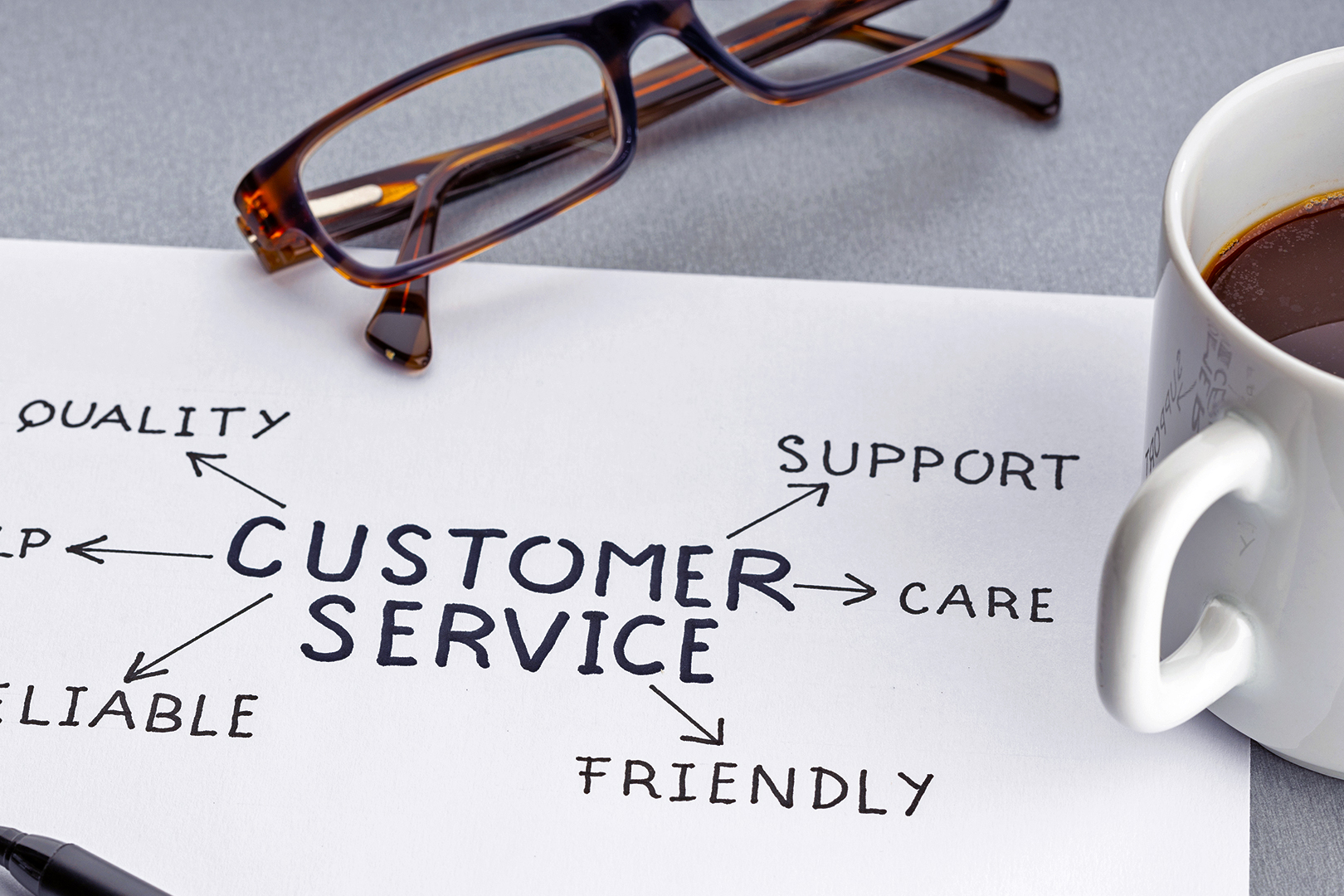In a digital world, outstanding customer service has become even more vital for a successful channel incentive program. A well-designed program will go beyond the online FAQ’s, emails, and newsletters. Engagement in your program is maximized when participants feel valued and recognized for their efforts, and you will see this result when your incentive program implements a high-caliber customer service.
But, it’s hard to understand what that means. George S. Patton stated, “Always do more than is required of you.” So, in this spirit, let’s cover some customer service tips and provide the blueprint on how to go from ordinary to extraordinary.
1. “Knowledge is Power”
Thoroughly knowledgeable facilitators are key to a thriving channel incentive program. It is commonly understood that your program support team needs to know the program from beginning to end, but many fall short when it comes to a deep level of understanding. The emphasis and focus of support training often homes in on the program structure, earning rewards, and understanding the rewards offered – the “what.” These are certainly important factors, however, to provide high-caliber customer service it is important to go beyond the surface level program description. You must teach your facilitators a deep understanding of the program. The learners must become the teachers.
To be fully knowledgeable about your program, facilitators should also have a thorough understanding of “who” the program is for and “why” it exists. This includes general demographics of the participants, why they are being selected, and more. This will provide facilitators with insight that will allow them to best understand their participants. Your participants will surely have a hard time explaining the “why” if your facilitators don’t fully understand it.
Complete knowledge of the “who,” “what,” and “why” of a program will give the support team the deep understanding to create the best program. They will be empowered with the information they need to solve problems which will make both parties happy.
2. Anticipate Needs
Now that your facilitators have a thorough understanding, the next stop to improving customer service is anticipating the needs of your participants. Before your program even begins, you can begin to think through potential issues that participants may encounter. This planning process can be broken down into two sections:
- Looking at the things that can be resolved during the process of building your program.
- Creating a plan for the pain points that cannot be resolved through program structure.
The first part of this process would be to identify the potential pain points that can be resolved through changes of the program. A well-structured program sets facilitators up for success by eliminating potential issues before they even arise. However, even the best program will not completely eliminate all pain points.
The second, and arguably more pertinent part of this process would be to plan out processes to solve potential issues during your program. Identify who your representatives and facilitators should go to for assistance and identify at what point issues should be escalated. An example of a standard escalation process could work like this:
- Process and/or Standard Procedure Manual: This should be your first line of defense. During the program planning process, you should have identified potential pain points of your program and this document should outline the steps that should be taken to resolve these issues. For example, a program that requires participants to enroll in the program using an online form should have the foresight to assist users who may struggle with technology. The process document should outline how to walk users through enrollment or how to manually enroll users if necessary. This manual should also be a “living” document that gets updated throughout the life of your program to include all issues that are encountered. If an issue cannot be resolved with this document, representatives should escalate it to the next step.
- Experienced Personnel: This group would consist of those regularly handling customer service inquiries and has regular contact with participants. To avoid unnecessary escalations to management, customer service personnel should be encouraged to discuss issues with their peers to uncover any solutions. Peers can also be useful in determining whether an issue requires further escalation or not.
- Lead Decision-Maker/Manager: This person would be given the power to make decisions and can be either an experienced customer service representative or manager. This person would make final decisions on how issues will be resolved and should be readily accessible to representatives.
3. Make the Connection
It is important to build a positive connection with your participants to maximize engagement in your program. Connections begin with the first interactions your participants have with your program facilitators. This initial interaction will impact how the participants view your program from that point on, either positively or negatively. Like first impressions you may have with a new co-worker, maintaining a calm, pleasant tone, and positive demeanor is vital to this first encounter. Whether it takes place in person, over the phone, or even email, always be aware first impressions matter.
Beyond initial impressions, it is also important to build a personal connection with participants. When facilitators understand who they are serving in the program, it becomes easier and more natural to find common denominators. Common ground is a natural place to begin building a meaningful connection and that naturally leads to a feeling of being valued.
4. Display Intentionality
We have all heard the adage, “Do unto others as you would have them do unto you,” but did you know that this can be taken to an even higher level of service? In this (fictitious) interview on customer service between The Ritz-Carlton’s Horst Schulze and Four Seasons Hotel’s Isadore Sharp, they discuss the “Platinum Rule.” This rule states, “Do unto others as THEY would have you do unto THEMSELVES.” This revised adage places emphasis on the recipient of the service, not on the one doing it; we all appreciate when people treat us the way we want to be treated.
This intentionality and care can most easily be displayed by taking the time to actively listen to concerns or issues. Make sure to let them know they have been heard, and then take the time to explain what you are going to do to resolve their issue. This is especially important when an issue cannot be immediately resolved, and the customer is impatient. It takes practice and patience for a customer service agent to master these types of scenarios, but the person on the other end of the line will be eternally grateful if you make them feel heard. Take the time to let a participant know that you will investigate the issue in a timely matter and provide them a timeline or follow up date. Even if a resolution cannot be made at the time of your follow-up, this is a great opportunity to show participants their issues are not being ignored and go the extra mile to make them feel they are in good care.
5. Take Action
This final tip takes all other tips above into consideration. It is important to act swiftly and efficiently in customer service matters. Facilitators will be best equipped to do this when they have the foundation of program knowledge, they understand how to meet their participants needs, and time has been taken to establish a connection with participants. On top of these important factors, it is also important to take the time to make plans for how to escalate unforeseeable issues. This includes designating who will be the decision-makers when complex issues arise. With all these things considered, facilitators will be able to communicate their solution plans more effectively to participants, and in turn, act quickly to solve the problem.
Beyond quick and efficient action, it’s important to also keep in mind the power of doing something “extra.” This can be as simple as sending a participant a small token of appreciation or bonus incentive to make them feel valued. The goal in every interaction with your participants is to make them feel more positivity towards you and your program. Some participants can be easily pleased with simply being treated well by facilitators. Others may need a little something extra to sooth their frustration. In either case, extra time and effort can go a long way to improving participants experience with your program and will result in better engagement within your program.
Taking the time to implement the above tips into your customer service protocols will set your program up for success. It will encourage your participants to engage, build trust, and establish a personal connection with your service team. Taking small steps to improve your customer service can make a big difference in the success of your program.
Service can make a big difference in the success of your program. At Brightspot, we are committed to providing exceptional customer service for you and your incentive programs. Not sure where to start? Download our Complete How-To-Guide To a Perfect Incentive Program. Find out how our process will help make your job easier and your program better! And of course, feel free to drop us a line to ask questions or see how we can make your incentive program the bright spot of your company.








